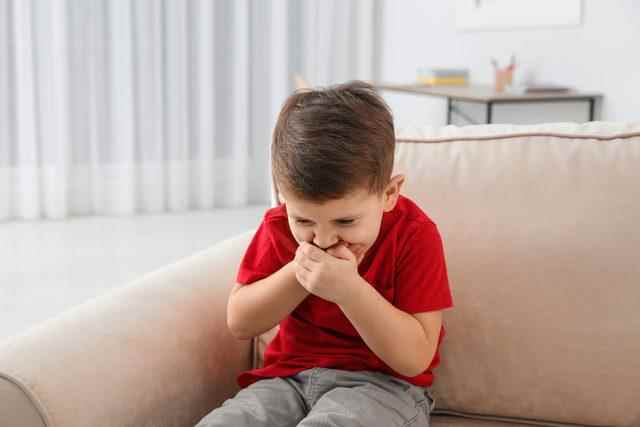Half of the brain tumors are benign tumors, and the other half are malignant tumors. According to statistical data from the USA; 3 out of every 100,000 children are diagnosed with a malignant brain tumor. Thanks to the important developments in the medical world today, it is heartening to see much more successful results in the treatment of benign and malignant brain tumors.
Acıbadem Altunizade Hospital Pediatric Neurosurgery Specialist Prof. Dr. Noting that early diagnosis and treatment play a key role in obtaining successful results from the treatment of brain tumors, Memet Özek said, “No child says I have a headache easily. Therefore, the child who complains of a headache every day for a period of 1-2 weeks should be taken seriously and a brain MRI should be taken to be sure. In addition, since the gushing type of vomiting that occurs especially in the morning on an empty stomach can also indicate a brain tumor, the cause should be determined by cranial MRI without wasting time.
EARLY DIAGNOSIS IS VERY IMPORTANT
Early diagnosis is very important in childhood benign and malignant brain tumors, as in all other diseases. “Small tumors are always easier to treat surgically than large tumors with the same location, and the surgical complication rate generally develops less in small tumors,” said Pediatric Neurosurgery Specialist Prof. Dr. Memet Özek continues his words as follows: “In addition, performing surgical treatment in malignant tumors, especially in ‘ependymoma’ and ‘medulloblastoma’ tumors that have the potential to spread through the cerebrospinal fluid, before the spread occurs, prevents the disease from reaching a hopeless stage. Benign tumors such as pilocytic astrocytoma and malignant tumors such as selected ependymoma and medulloblastoma can also be cured by early treatment.”

THESE SIGNALS MAY BE THE HIGHLIGHTS OF BRAIN TUMOR
Pediatric Neurosurgery Specialist Prof. Dr. Memet Özek lists the symptoms that parents should pay attention to against benign and malignant brain tumors as follows:
in babies
In babies whose fontanels are still open, the head circumference may expand more than normal, weak sucking, decreased activity, nausea, vomiting and weight loss may occur. In brain tumors located in the posterior cavity, hydrocephalus, which is known as excess water collection in the head, may also develop.
in children
It can manifest as nausea, vomiting, headache, drooping eyes, slurred speech, hand-arm coordination disorder, loss of strength in the arms and legs, balance problems and a decrease in school success. Paralysis and epileptic seizures may also develop.
IF YOU VOVE IN THE MORNINGS ON AN EMPIRE!
Nausea and vomiting are among the most common symptoms of benign and malignant brain tumors in children. Pediatric Neurosurgery Specialist Prof. Dr. Memet Özek, warning that the gush-like vomiting that develops especially in the morning on an empty stomach may be an important sign of a brain tumor, said, “In cases of nausea and vomiting, a pediatrician is first consulted. In this case, the fundus examination should be done, otherwise time may be lost because this problem is thought to be a gastrointestinal system problem. Especially in the gush-like vomiting that occurs in the morning on an empty stomach, a cranial MRI should be performed immediately and the issue should be clarified.

MOST CANNOT IDENTIFY THE REASON
Benign tumors called pilocytic astrocytoma are most common in children, while malignant tumors, especially posterior pit medulloblastoma and ependymoma, are observed in the second frequency. Less commonly, malignant tumors such as diffuse midline gliomas and atypical teratoid rhabdoid tumors can also be seen. As with many tumors, the causative agent cannot be detected in most benign and malignant childhood brain tumors. However, it is known that brain tumors can occur as a result of long-term exposure to radiation.
GROUND-BREAKING DEVELOPMENTS IN TREATMENT
The most ideal treatment for all brain tumors except diffuse midline gliomas; surgical method is to remove as much tumor tissue as possible. Then, if necessary, radiotherapy and chemotherapy methods are applied according to the name and molecular infrastructure of the tumor. Pediatric Neurosurgery Specialist Prof. Dr. Memet Özek, stating that it is of vital importance to conduct molecular studies from the tissue of the tumor obtained after surgery, explains the developments in treatment as follows: “Today, targeted chemotherapies that do not damage healthy tissues are being developed. Drugs that can affect the mutations of tumors can be developed and used in appropriate patients. Thus, in benign and malignant tumors, the regrowth of the tumor and its spread to other parts of the brain can be prevented. In this way, the life expectancy of patients is extended and their quality of life increases. Our clinic also makes important contributions to the world literature, where there are quite a few gaps in this regard, especially in targeted, personalized chemotherapy treatments.”
